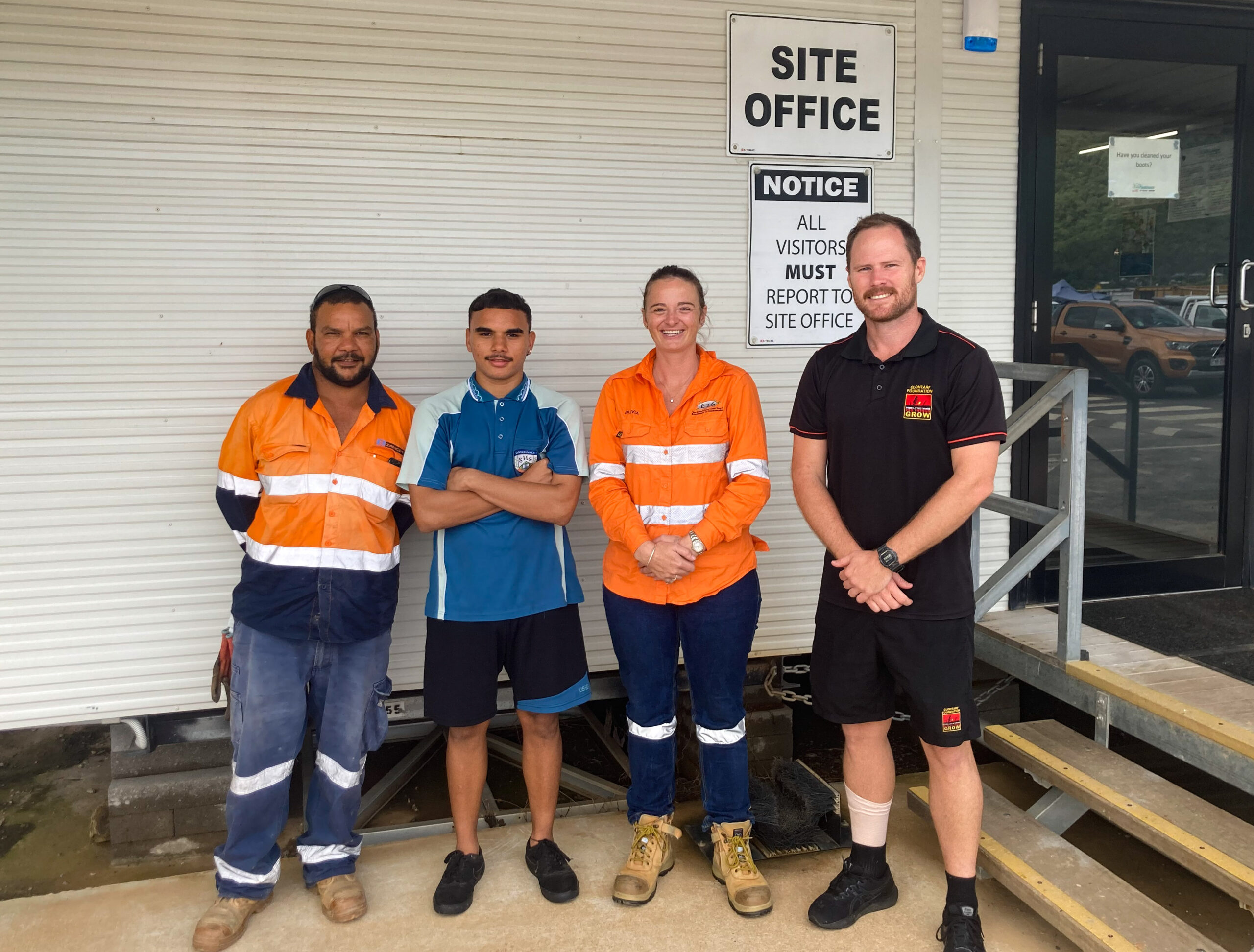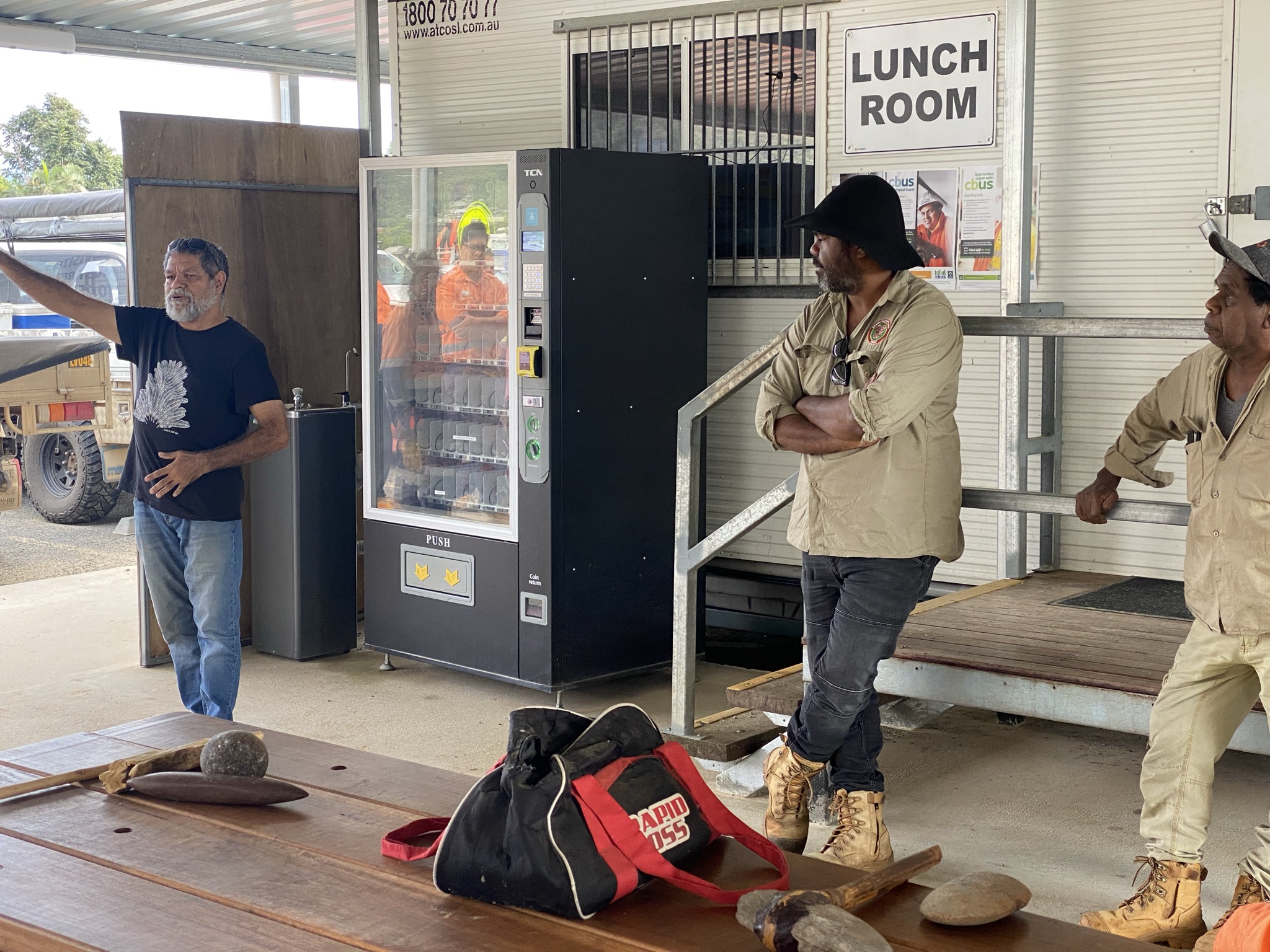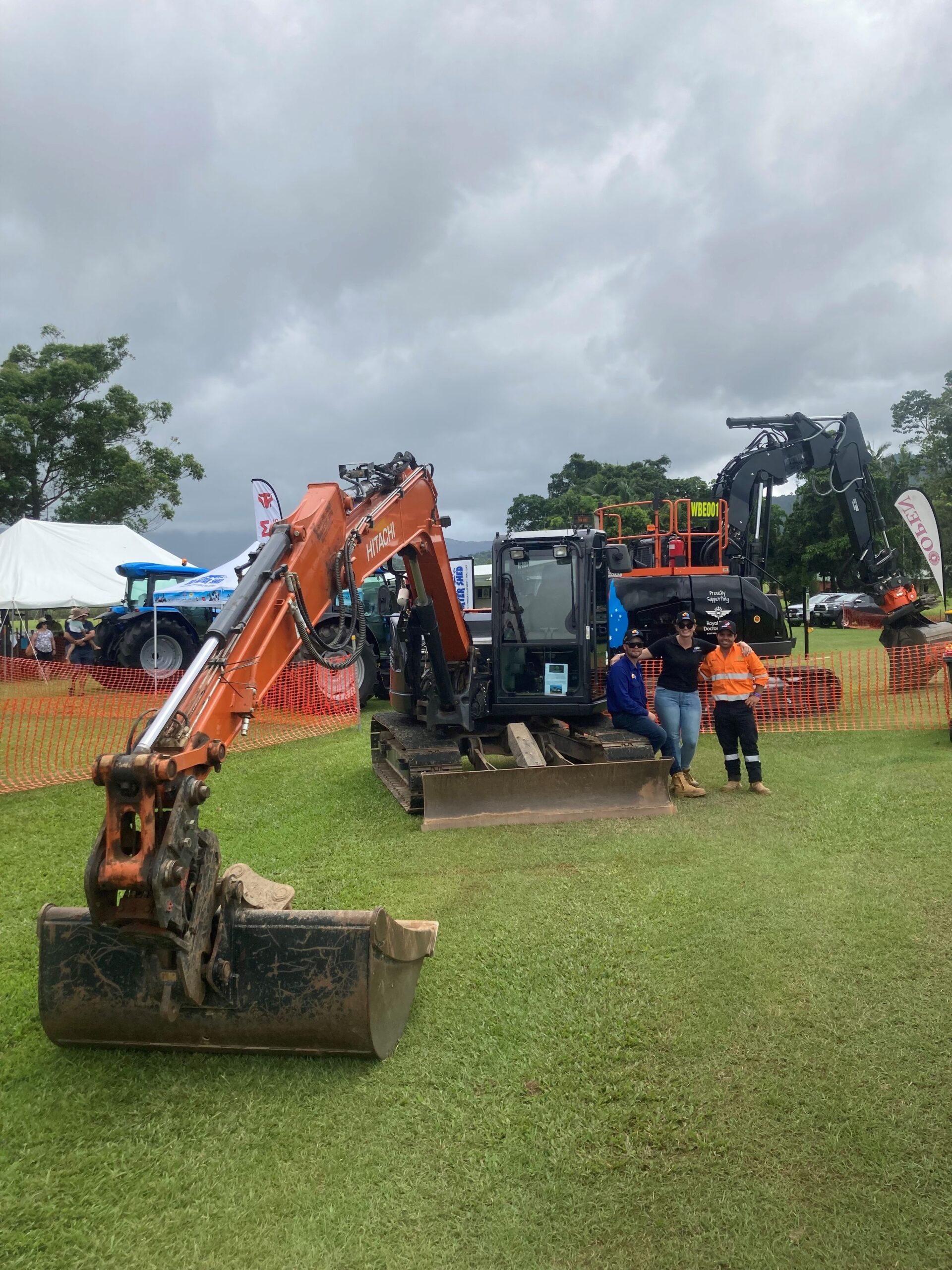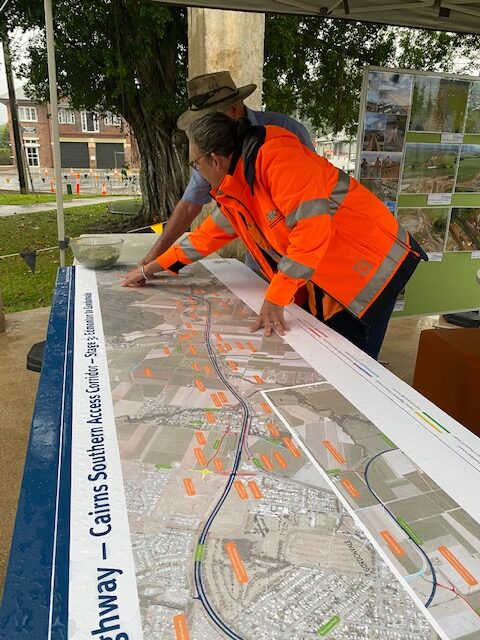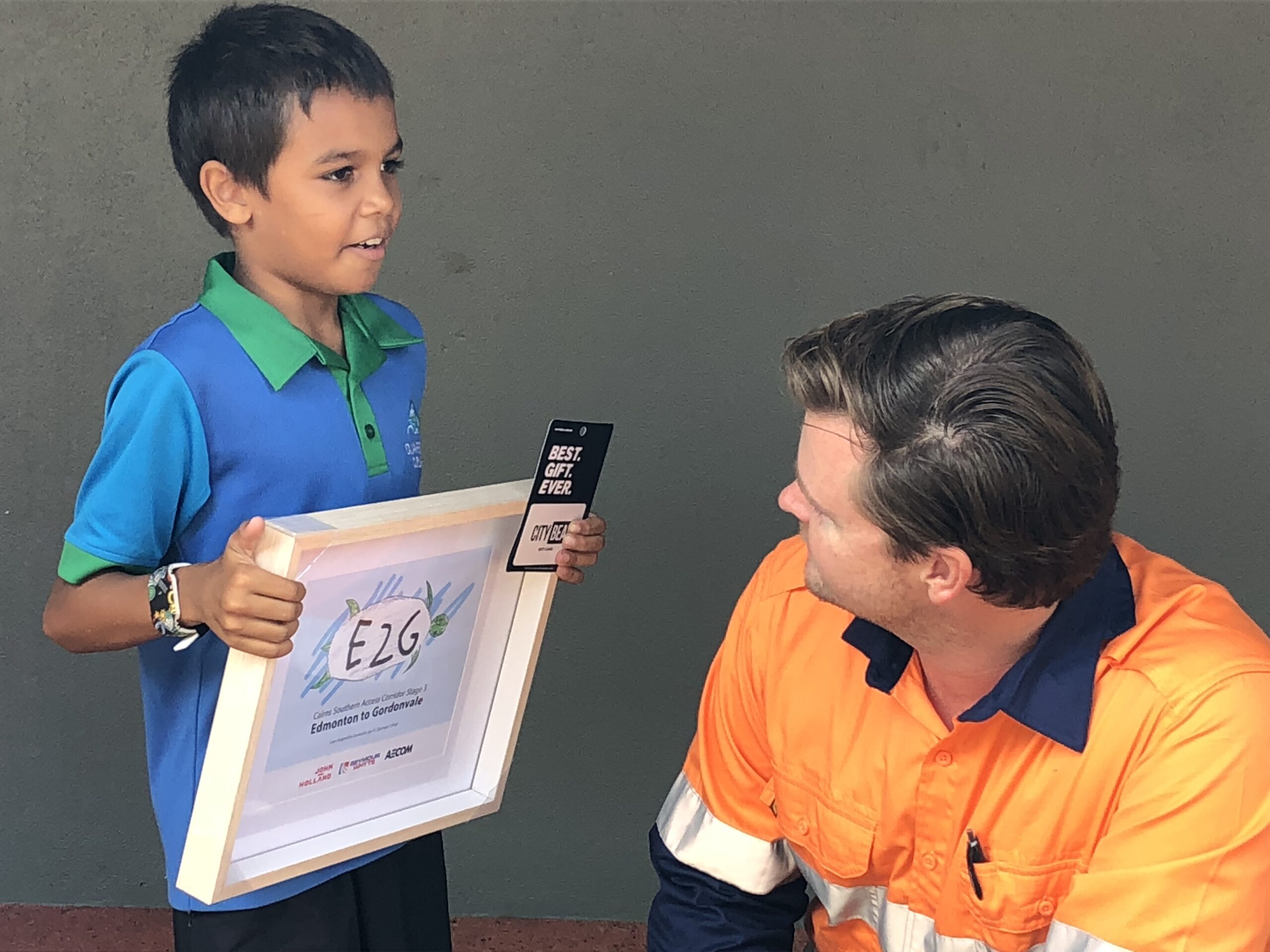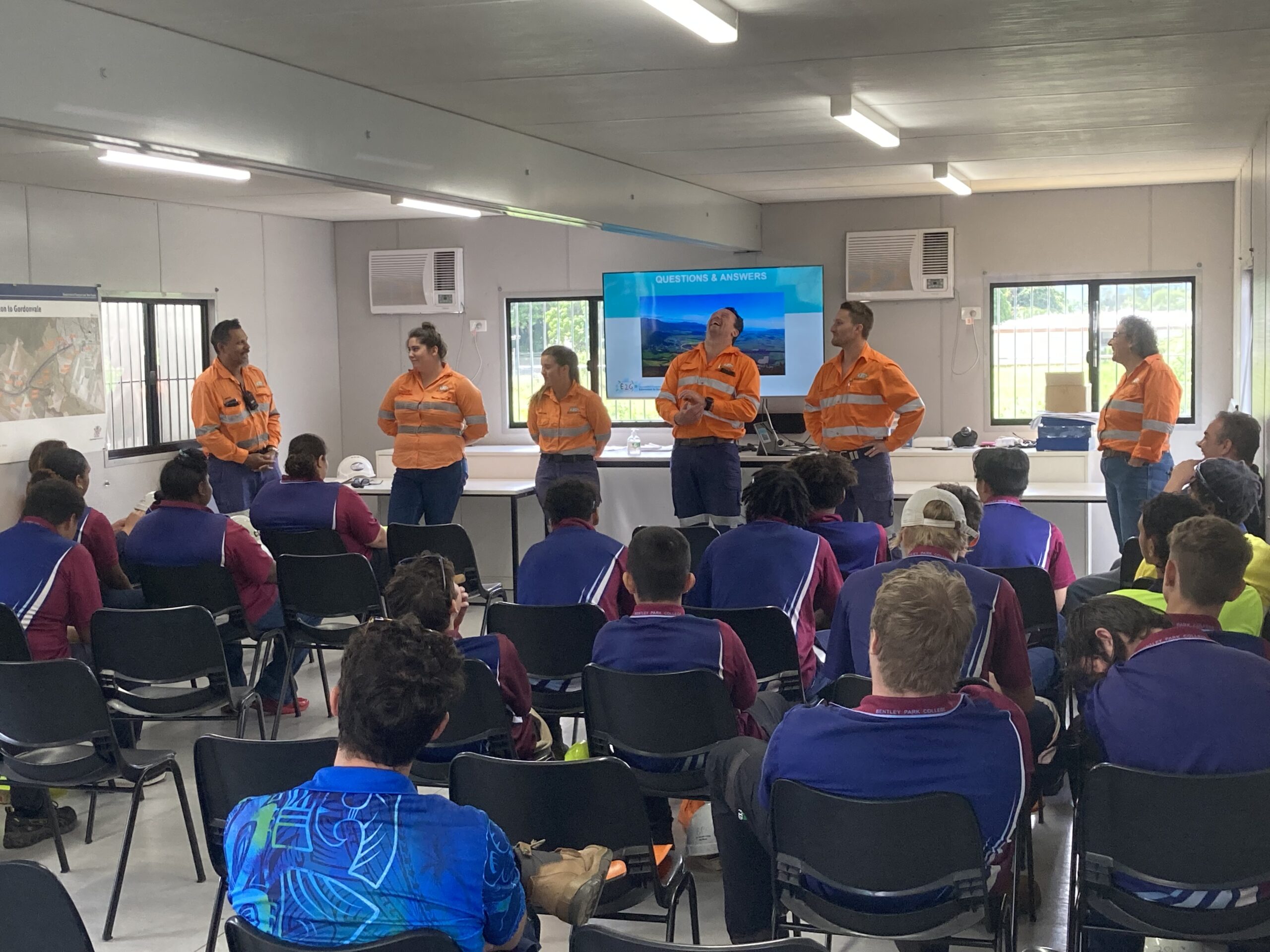Cairns Southern Access Corridor Stage 3: Edmonton to Gordonvale Project – Social Outcomes
Describe WHAT you have done and HOW you have done it.
It is crucial for infrastructure projects to integrate with the local community as this fosters a sense of
cohesion and promotes sustainable development. The project recognised this importance and
adopted a proactive approach to social excellence by integrating with the local community and
identifying opportunities to leave a positive legacy within the region. By engaging with local
stakeholders, the project team identified key issues in the local community where they could
contribute and develop solutions to address these challenges.
In collaboration with the Traditional Owners, namely Gimuy Walubara Yadinji and Dulabed
Malanbarra Yadinji, E2G has identified and protected nine Indigenous memorial sites, a sacred tree,
15 stone artifacts, and three heritage camp sites previously unknown to the local Traditional Owner
groups and enhanced heritage values through various initiatives. These include enabling the future
development of legacy areas, hosting cultural events, infrastructure naming, protecting heritage
trees, and co-designing artwork installations with local Traditional Owners. More than 2653 people
have received cultural heritage inductions from the Traditional Owners educating them on the rich
cultural heritage of the area. The project has also engaged local Indigenous artists and schools in the
development of both its logo and additional artwork incorporated into reward and recognition
prizes to foster interest in the local cultural heritage.
The project supported local businesses, social enterprises, and Indigenous businesses by maximizing
spending through multi-criteria decision making with a 45% non-priced criteria weighting. 79.6% of
the total contract value was spent within the local zone that covered around 125km, and 4.5% with
Indigenous-owned businesses, contributing to the local economy and growth for Indigenous
communities. E2G specifically aimed to upskill smaller operators who may not have been exposed to
a construction project of this scale or complexity.
E2G's training and upskilling efforts aimed to create sustainable employment by developing both the
project employees and the wider community. The targets for New Entrant Development (137% of
total target for apprentices and trainees) and Workforce Upskilling Development (335% of total
target, total training hours) were exceeded, with 64% of these hours upskilling Aboriginal and Torres
Strait Islander people. The project received the Large Employer of the Year award at the 2023
Queensland Training Awards (FNQ Region).
E2G also partnered with local schools and Gordonvale Clontarf Academy. Site visits, mock interviews,
wellness and positive attitude training and mentorship programs provided students with exposure
to construction sites, workplace health and safety, machinery operation, and potential job
opportunities resulting in several young men being employed on the project. E2G also raised money
to construct a camping trailer for Gordonvale Clontarf Academy, supporting their work in providing
experiences for young Aboriginal and Torres Strait Islander people and developing them for life after
school.
E2G's approach is evident in its support of the local community, preserving cultural heritage and
collaborating with local traditional owners, schools, and various stakeholders and has created an
environment of pride, charitable giving, and support for educational programs. This comprehensive
approach resulted in meaningful and lasting benefits for all stakeholders involved.
What were the OUTCOMES and how were those outcomes shared?
The E2G project has excelled in supporting local businesses, preserving cultural heritage, training
and upskilling the workforce, rewarding and recognising employees, and working with local schools.
These outcomes have been shared through various channels, such as project open days, displays at
the Babinda Harvest Festival and Gordonvale Sugar Solstice Community Fair, social media posts,
education material in the project visitor centre, and industry and community site tours ensuring
maximum impact and long-lasting benefits for all stakeholders.
The project supported local businesses, social enterprises, and Indigenous businesses by maximizing
local and Indigenous spending through multi-criteria decision making with a 45% non-priced criteria
weighting. Within the local zone, 79.6% of the total contract value was spent and 4.5% of this with
Indigenous-owned businesses, contributing to the local economy and growth for Indigenous
communities.
E2G actively engaged with the Traditional Owners, achieving significant outcomes in preserving and
celebrating cultural heritage. These include:
- Identification and preservation of heritage sites ̶ engagement with the Traditional Owners
identified, protected and preserved nine Indigenous memorial sites, a sacred tree, 15 stone
artifacts, and three heritage camp sites previously unknown to the local Traditional Owner
groups. With the support of the Traditional Owners, E2G has preserved all nine sites with
two relocated to preserve sensitive cultural practices. - Archaeological Discoveries ̶ the project's archaeological processes with the Traditional
Owners and Griffith University revealed human remains found on-site were over 600 years
old, and one of the sites belonged to a Yadinji King. These findings have enriched the
understanding of the area's cultural history and deepened the connection between the
project and the traditional owners. - Legacy Heritage Areas ̶ E2G is currently working with the Traditional Owners and the
Department of Transport and Main Roads (TMR) to develop legacy heritage areas within
the project's footprint, ensuring the long-lasting preservation and recognition of the
region’s Indigenous heritage. - Cultural Celebrations and Events ̶ the project hosted various ceremonies and events, such
as a Traditional Smoking Ceremony, Welcome to Country and National Reconciliation Week
and NAIDOC Week annually, to foster a greater appreciation for the local heritage and to
share these outcomes with the broader community. E2G has also supported the
Gordonvale Indigenous Rugby League Carnival two years in a row by providing prize money
for the successful teams. - Heritage Trees and Infrastructure naming ̶ the project has protected and retained
heritage trees on the site and named 10 pieces of infrastructure to reflect the local
identities and rich Indigenous culture. This was achieved through a public submission
process that provided names and stories, including five in the local Aboriginal dialect
Yidinji and five acknowledging well-regarded local historic identities. - Artwork and History Storylines ̶ the under construction shared cycleway features artwork
and history storylines co-designed with the local Traditional Owners. Each artwork piece
represents a story from the local elders, showcasing a rich heritage and fostering a deeper
connection with the community. - Cultural Heritage induction ̶ over 2653 people were inducted on site with cultural heritage
inductions presented by the local Traditional Owners. This induction has provided
education on the heritage values of the Edmonton and Gordonvale area, promoting greater
understanding and respect for the region's Indigenous cultural significance.
Training and upskilling
The project surpassed targeted KPIs for apprentices and traineeships (137% of the Target –
123,452 hours) and Workforce Upskilling Development (335% of the Target – 229,632 hours).
Aboriginal and Torres Strait Islander people comprised 64% of the total workforce skills
development training hours. The project received the Large Employer of the Year award at the 2023 Queensland Training Awards (FNQ Region)
Reward and Recognition
This project collaborated with local Indigenous artists and schools for the development of its
artwork and incorporated these elements into the project's Reward and Recognition prizes. The
weekly Manager's Award, Budjial, fosters a sense of pride, and the reward and recognition process
included a project donation to local charities of the winner's choice.
Working with local schools
The project engaged with local schools, organising site visits, career conversations, mock interviews,
wellness and positive attitude training, and mentorship programs. The project also raised funds to
help buy Gordonvale Clontarf Academy's camping trailer, contributing to the students'
development and readiness for life after school.
Describe WHO benefited from your initiative, innovation, or approach?
The E2G project has benefited various groups within the local community through its initiatives,
innovations, and approaches. These groups include local businesses, social enterprises, Indigenous
businesses, Traditional Owners of the area, students from local schools, and the project workforce.
By focusing on targeted local community spend, the E2G project has supported local businesses and
Indigenous-owned enterprises. This approach has contributed to the local economy, fostering
economic growth and job opportunities in the region. E2G specifically aimed to upskill smaller
operators who may not have been exposed to construction of this scale or complexity before,
enabling several operators to invest back into their business and create more capability within the
region.
In terms of cultural heritage, the E2G project has collaborated closely with the Traditional Owners,
namely Gimuy Walubara Yadinji and the Dulabed Malanbarra Yadinji. Through this collaboration
the project has identified and preserved an Indigenous site, a sacred tree, artifacts, and
archaeological heritage camp sites previously unknown to the local Traditional Owner groups. The
project is currently working with the Traditional Owners to further develop legacy heritage areas,
enhancing, and preserving the cultural heritage value of the area for future generations.
The E2G project has also placed a strong emphasis on training and upskilling the workforce, with a
focus on developing both project employees and the wider E2G community. This approach has
resulted in new entrant development achieving 137% of the target and workforce upskilling
development achieving 335% of the target. Importantly, 19% of the total workforce identifies as
Aboriginal and Torres Strait Islander people, significantly surpassing the 5% target.
Local schools have benefited from the E2G project's partnership and commitment to local
education. School site visits provide students with exposure to construction sites, workplace health
and safety, machinery operation, and in several cases employment on the project. The project's
collaboration with the Gordonvale Clontarf Academy has helped improve education, discipline, life
skills, self- esteem, and employment prospects for young Aboriginal and Torres Strait Islander
people.
The E2G project's initiatives have made a lasting impact on the local community, benefiting a diverse
range of stakeholder groups, including Indigenous people and the project workforce. Through its
focus on local community spend, cultural heritage preservation, training and upskilling, and
partnerships with local schools, the E2G project has demonstrated excellence in social outcomes,
and contributed to the well-being of the local community.
What LEGACY and UN SDG CONTRIBUTION was achieved?
The E2G project has benefited the local community, leaving a lasting legacy and contributing to the
United Nations Sustainable Development Goals (UN SDGs) through its focus on local community
spend, cultural heritage, training and upskilling, and partnerships with local schools.
SDG 4 ̶ Quality education
The E2G project has partnered with local schools, such as Bentley Park College (BPC) and Djarragun
College, to provide students with exposure to construction sites, workplace health and safety,
machinery operation, and potential job opportunities. In collaboration with BPC, the project hosted
a site visit for Year 11 building and construction students in 2022 with the site visit so successful
another is being looked at for 2023. The project also supported the Gordonvale Clontarf Academy,
an organisation aimed at improving the lives of young Aboriginal and Torres Strait Islander men by
leading career conversations, mentoring students, conducting mock interviews, wellness training, and
raising $4500 to construct a camping trailer to support their education program.
SDG 8 ̶ Decent work and economic growth
The E2G project prioritized local and Indigenous community spend, with 79.6% of the total contract
value spent within the local zone covering around 125km and 4.5% of total contract value spent on
Indigenous-owned businesses. By focusing on training and upskilling both project employees and the
wider e2g community, the project exceeded its targets for new entrant development (137%) and
workforce upskilling development (335%). additionally, 19% of the total workforce identifies as
Aboriginal and Torres Strait Islander people, surpassing the 5% target.
SDG 11 ̶ Sustainable cities and communities
The E2G project has collaborated closely with Traditional Owners of the area, such as Gimuy
Walubara Yadinji, Dulabed Malanbarra Yadinji, and Wanyurr-Majay Yidinji, to foster strong working
relationships and protect cultural heritage. The project identified and preserved nine Indigenous
site, a sacred tree, 15 stone artifacts, and three heritage camp sites previously unknown to the
local Traditional Owner groups. The project also supported the development of two future
memorial sites located at Stoney Creek and Wrights Creek.
During the COVID-19 pandemic, the project team took extra precautions to facilitate essential
meetings with elders, ensuring the planning for the exhumation of ancestral remains at Stoney
Creek could continue safely. This included hosting socially distanced meetings with individual
workstations, sanitizing measures, and providing masks.
The E2G project has integrated cultural heritage into various aspects of its delivery, such as hosting
traditional smoking ceremonies, celebrating events like National Reconciliation Week and NAIDOC
Week, and protecting heritage trees. The project has also named delivered infrastructure to reflect
the local Edmonton and Gordonvale areas rich Indigenous culture and involved local traditional
owners in the co-design of artwork installations along the active transport shared paths.
The project's reward and recognition process is culturally sensitive, engaging local artists and
incorporating artwork that represents the local community. The E2G turtle logo, created by a 9-
year-old student from Djarragun College, is the project logo and is the foundation of the weekly
Manager's Award, while donations from the project are made to local charities on behalf of the
winners.
The E2G project has made a significant contribution to the local community by supporting local
businesses, preserving cultural heritage, and fostering long-lasting relationships with Traditional
Owners. Through its focus on training and upskilling, the project has promoted economic growth and
increased employment opportunities for the community. These initiatives have had a measurable
and enduring impact on the local community, specific stakeholder groups, Indigenous people, and
the project workforce, demonstrating excellence in social outcomes and aligning with the United
Nations Sustainable Development Goals.
[embed]https://youtu.be/NHBux6llflQ[/embed]

